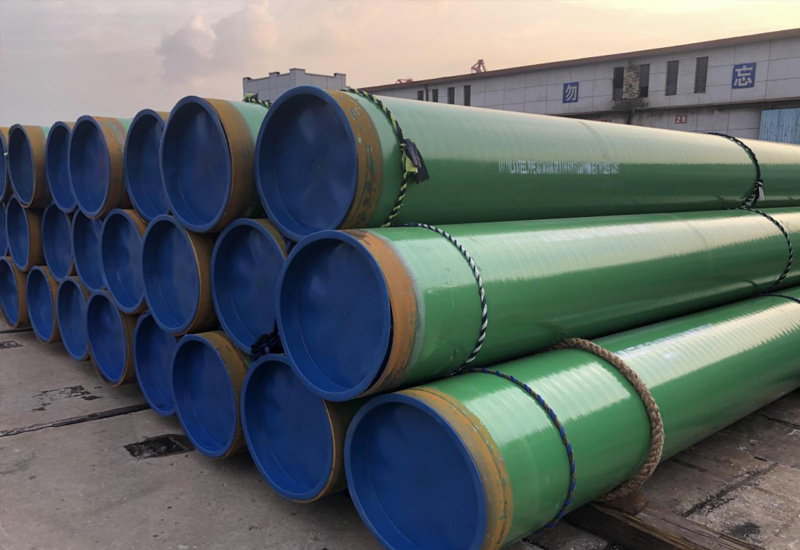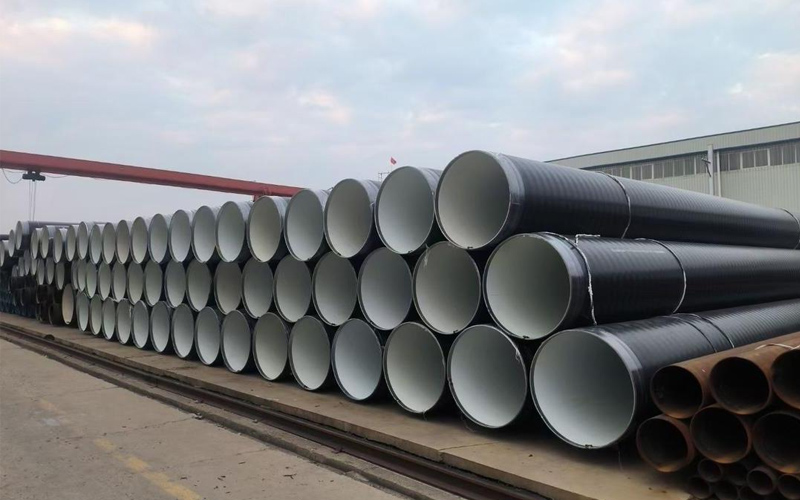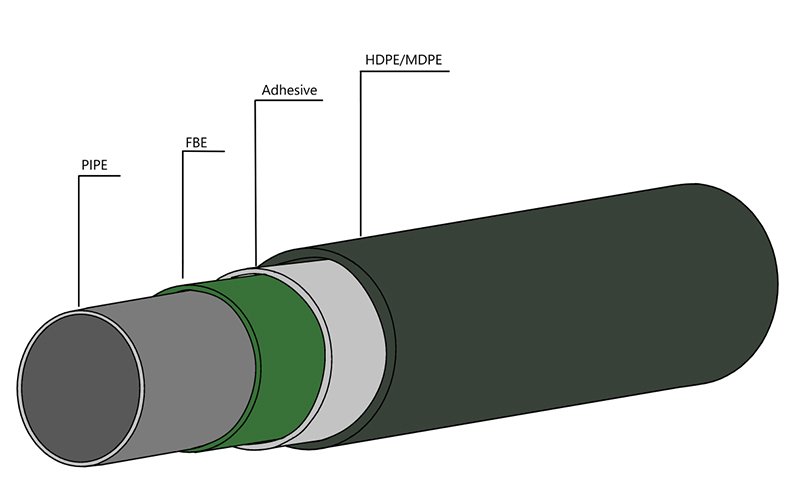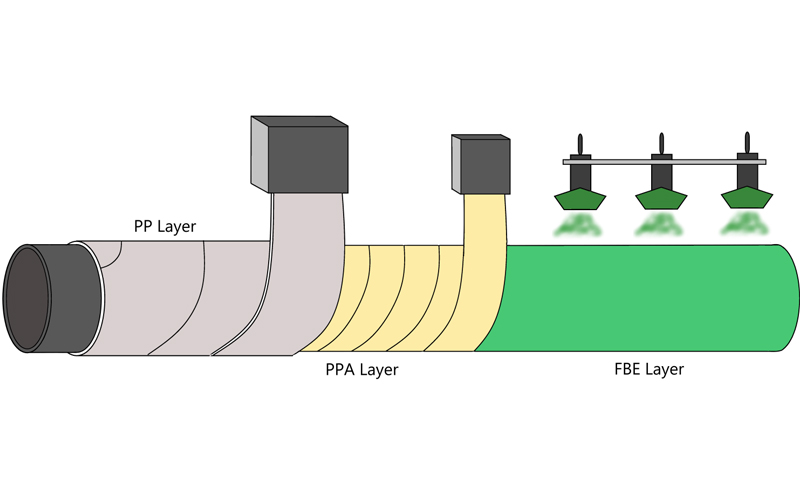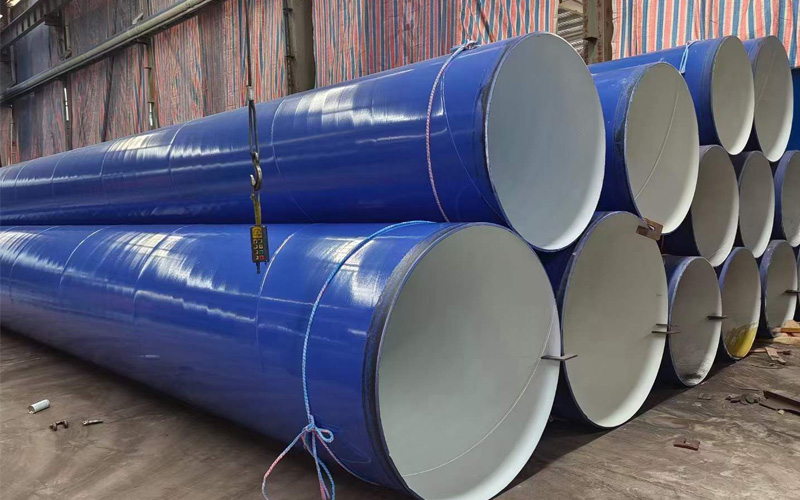What is the Difference Between DSAW, LSAW, and HSAW Pipe?
Introduction
As an engineer, specifier, or purchaser of large diameter steel pipe, you are bombarded with a whole string of confusing, apparently contradictory acronyms: DSAW, LSAW, and HSAW/SSAW. If you’ve been comparing technical datasheets or supplier quotations, these terms can make the decision making process more confusing. DSAW is pipe like LSAW or is it something else? HSAW is not equal to SSAW? Using the wrong product through a simple misunderstanding of this terminology can have serious consequences in project risk and commercial error.
The answer to how four terms can be so confusing is actually quite simple — you just need to understand the basic hierarchy between the words to navigate the discussion with clarity. The confusion occurs because one term refers to a welding process and the other terms refer to pipe products which are manufactured using that process. Confusing the process used to fabricate the product for the product itself is what causes the most confusion. Engineering specifications and communication with manufacturers and suppliers are dependent on having a good knowledge of this distinction.
This article will be your definitive engineering guide to these terms. In this post, we will break down the acronyms, discuss the technology behind the DSAW welding process, and present a straightforward, quantitative comparison of its two main products – LSAW (Longitudinal Submerged Arc Welded) pipe and HSAW/SSAW (Helical/Spiral Submerged Arc Welded) pipe. Lastly, we answer a few of the most asked questions about this topic so that every professional dealing with welded steel pipe becomes a know-it-all.
1. The Umbrella Term: What is DSAW (Double Submerged Arc Welding)?
First and foremost, DSAW is a welding process, not a type of pipe. It stands for Double Submerged Arc Welding. This is a high-quality, high-deposition rate welding method used to create the seam in large-diameter fabricated pipes. Let’s break down the name:
· Double: This means that the seam of the pipe is welded in two passes, one from the inside (ID) and one from the outside (OD).This produces a two-sided reinforcement full penetration weld which is a very reliable and strong seam.
· Submerged Arc: In the welding process, the electric arc is under a layer of granular, fusible flux like a situ arcaw can be viewed as a combination of the processes of electrode and base material melting and the flux melting In its simplest form, the flux melts and covers the molten weld pool from contamination by the atmosphere, resulting in a very clean, high quality weld that is free of impurities.
Hence a pipe termed as DSAW pipe means its longitudinal or helical seam was formed by the Double Submerged Arc Welding process.Both LSAW and HSAW pipes are considered as such.
2. The First Product Type: LSAW (Longitudinal SAW) Pipe
LSAW is Longitudinal Submerged Arc Welded pipe. This is a seam orientation defined product. A LSAW pipe features one single longitudinal seam that is straight and runs along the length of the pipe.
It is made from one single flat piece of steel. The plate is rolled into a cylinder by either the JCOE or UOE method. After the cylinder is rolled, the longitudinal seam is welded by DSAW process.Because it is formed from a solid, high-grade steel plate and features the shortest weld, LSAW pipe is most often recommended for severe, high pressure service.
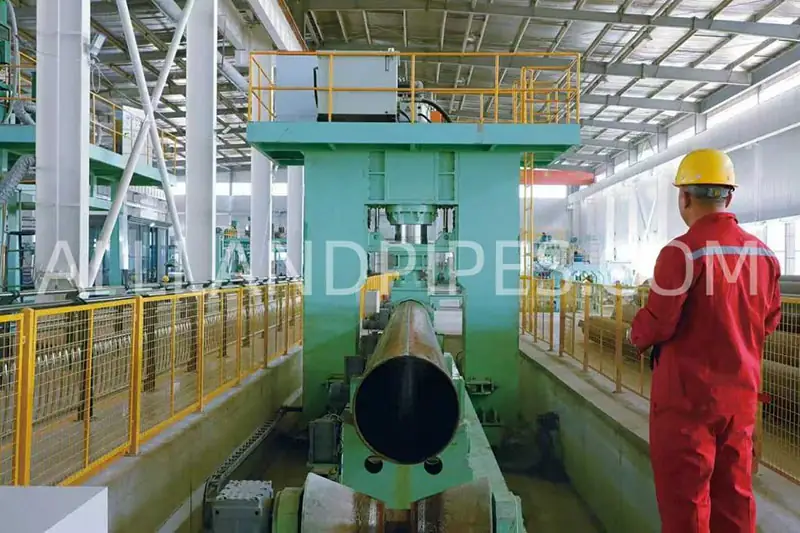
3. The Second Product Type: HSAW / SSAW (Helical / Spiral SAW) Pipe
HSAW is the acronym of Helical Submerged Arc Welded pipe. It is also widely called as SSAW (spiral submerged arc welded) or spiral-welded pipe. The seam is spiral shaped and wraps around the pipe just like the red stripe on a white candy cane.
It is formed by uncoiling a narrow strip of steel (known as skelp) and running it through a forming machine at a controlled angle. The strip is consecutively formed into a cylinder while the DSAW process welds two adjacent edgesThis continuous manufacturing is very suitable for long pipes and large diameters.
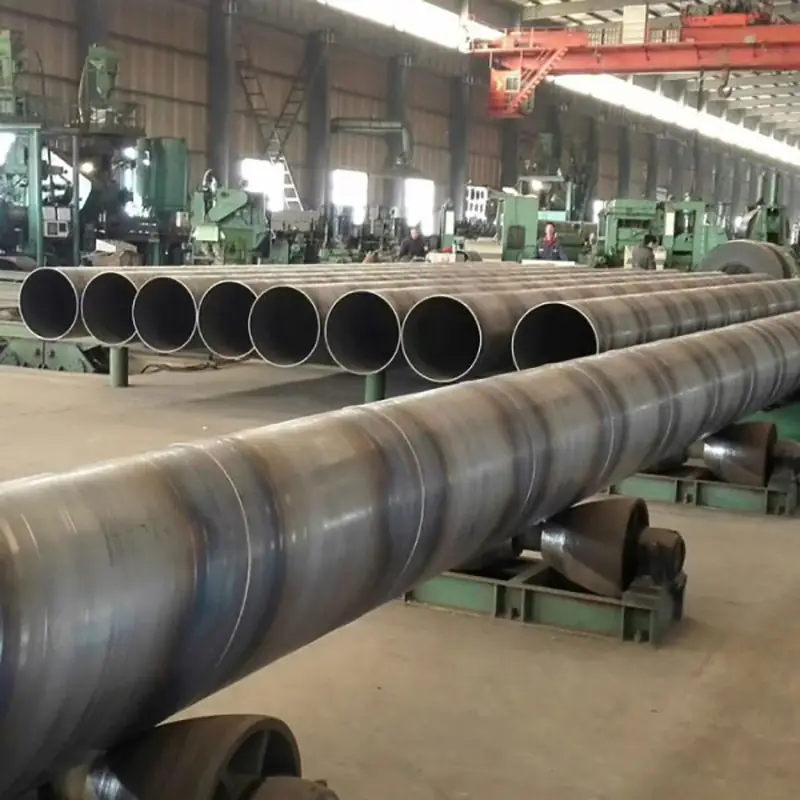
4. Quantitative Analysis: LSAW vs. HSAW/SSAW at a Glance
The choice between LSAW and HSAW pipe is an engineering decision based on the application’s specific requirements. The following table provides a clear comparison of their key attributes.
| Feature | LSAW (Longitudinal) Pipe | HSAW / SSAW (Helical/Spiral) Pipe | Engineering Implication & Rationale |
| Welding Process Used | DSAW | DSAW | Both products utilize the same high-quality welding process, but the seam orientation is the key difference. |
| Weld Seam Orientation | Straight / Longitudinal | Helical / Spiral | The straight seam of an LSAW pipe is shorter and simpler to inspect with NDT. |
| Raw Material | Individual, high-quality steel plate. | Continuous coil of steel strip (skelp). | LSAW’s reliance on discrete plates allows for very high-quality control of the base material for demanding applications. |
| Weld Seam Length (per 12m pipe) | 12 meters | ~20 – 50 meters (varies with diameter and helix angle) | LSAW has the shortest possible weld seam, statistically reducing the potential for weld-related issues in a pipeline. |
| Typical Applications | High-pressure oil & gas transmission lines, offshore structures (API 5L, API 2B). | Low-to-medium pressure water/gas distribution, structural piling, large-diameter casings. | LSAW is preferred for critical, high-pressure service. HSAW is a highly cost-effective solution for less demanding applications. |
| NDT Inspection | Simpler and more reliable due to the straight, predictable geometry of the weld seam. | More complex due to the spiral path of the weld, requiring more sophisticated inspection systems. | The ease and reliability of NDT on LSAW pipe provide a higher degree of quality assurance for critical service. |
Conclusion
The DSAW, LSAW, and HSAW terminology confusion appeared big can be simplified if you realize a simple rule: DSAW is the high-integrity welding process while LSAW and HSAW are two main product types made by this process. LSAW vs. HSAW is an important application-based engineering decision. Selection should be made against a well defined evaluation of the operational and commercial motive forces for the project. When it comes to high pressure, critical service where weld integrity, minimum seam length, and quality of base material are of utmost importance, LSAW pipe is the undisputed leader. For low-medium pressure or structural uses where large diameters and cost effectiveness are of greatest significance, HSAW pipe is a superb choice.at allland steel pipe could assist you to walk through these specifications to make certain that the product you bring in can be right to the technical and the commercial end of your project.
Frequently Asked Questions (FAQ)
· Q1: Are HSAW and SSAW the same thing?
· A1: Yes. There is no difference between HSAW and SSAW pipe. Both of them mean the same product; a pipe with a spiral weld seam. “Helical” and ”Spiral” are simply different names for the same shape.
· Q2: Which is better, LSAW or HSAW pipe?
· A2: None isparticularly “better” – they’re just meant for different uses. For high-pressured, high-consequence applications such as those found in major oil and gas pipelines and where strength, toughness, and weld length are essential considerations, LSAW is the best engineering decision.For large diameter, low-medium pressure applications such as water transmission or structural piling where value for cost is the main measure, HSAW is a very good and effective option.
· Q3: Where are DSAW pipes used?
· A3: DSAW is a welding process for producing LSAW and HSAW pipes, so “DSAW pipes” are commonly used in countless applications. This covers the gamut from critical oil and gas transmission lines (in LSAW pipe) to large municipal water systems and deep foundation piles (in HSAW pipe). .
· Q4: Can LSAW pipe have more than one seam?
· A4: Yes. For very large diameters (such as over 60 inches), in case a single steel plate is not wide enough to roll up the full circumference, two plates can be used. The pipe is formed by two halveshells pressed two opposing longitudinal seams. This is still considered LSAW pipe.
Share:
Get Your Custom Steel Pipe Quote Today!
Provide us with your project details (like application, specifications, quantity). Our experienced team will respond with a tailored solution and competitive quote within 24 business hours.
Related Articles
ASTM A53 vs. API 5L: A Guide to Selection and Application
Introduction:Technology differences determine success or failure, and selection needs to be “precise”
Steel Density Analysis: Core Differences between Mild and Medium Carbon Steels and Industrial Applications
3LPE coated steel pipe: a solid barrier in the field of industrial corrosion protection
3LPP coated pipe: anti-corrosion guard in high temperature and high pressure environment
FBE steel pipe: the technological armor of the steel defense line
HOT TAGS
latest posts
- Introduction:Technology differences determine success or failure, and selection needs to be “precise”
- FBE Steel Pipes: Corrosion Protection Redefined
- DIN 30671: A Guide to FBE Coating for Steel Pipes
- A Guide to Structural Pipe: ASTM A500vsEN10219
- Weld Seam Integrity: A Deep Dive into LSAW vs. SSAW Pipe




